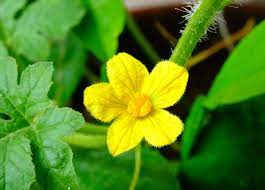Weed Management on Plantain Cultivation
Weed is the major constraint to tropical crop production which makes weed management very important if you want to obtain a maximum yield from your plantain farm. Weeds can be hand-pulled or chemically controlled.
Paraquat and simazine are appropriate herbicides since they control the weeds without affecting the plantains, unless leaves are accidentally sprayed. Glyphosate, diuron and gramuron are not recommended as they can be phytotoxic to plantains.
Weed management consists in removing the weeds that compete with the banana plant for resources and favour the development of parasites. Controlling weeds is particularly important in the first few months after plantation when the banana plants are small and there’s little shade. In commercial plantations where banana plants are grown on bare soil, sowing a ground cover can reduce the use of herbicides.
Plantains should always be weed-free. Weed management otherwise known as weed control starts during field preparation. Weeds are initially controlled about every 6 to 8 weeks; but when the plantain canopy closes, about 5 to 6 months after planting, weed infestation declines due to shading. Any plant with a superficial root system should be considered a weed and therefore eliminated.
Grasses or herbs are the most pernicious weeds because they derive their nutrients from the same level of the soil as the plantains. Tree seedlings are not considered to be weeds.
During weed management, weeds can be controlled through mulching, chemically or manually. Mulchingis the most efficient means, because a mulch layer can impede or prevent weed growth. Chemical control is expensive and in some circumstances also dangerous. Manual weeding is not recommended, although the weeds are thereby effectively controlled, because slashing or hoe weeding inevitably damages the plantain root system. However, sometimes manual weeding is the only possible method.
Read Also: Methods of Weed Control on a Pineapple Farm
Weed Management on Plantain Cultivation

According to a recent detailed research, below are the different methods of controlling weeds on your plantations to enhance mazimum yield:
(1) Chemical control methods
The use of herbicides to control weeds dates back to the 1970s. But herbicides are not only toxic, there also persist in the soil. Moreover, their uncontrolled use can lead to soil erosion, loss of organic matter and a reduction in the soil’s biological activity.
In the 1980s, certain production zones along Costa Rica’s Caribbean coast had to be abandoned because of that reason.
Herbicide use is now better controlled. Applications should be conducted at the most appropriate time and respect the recommended doses.
1a) Herbicides
Two types of herbicides are used in commercial plantations: contact herbicides (e.g. paraquat) and systemic herbicides (e.g. glyphosate, glufosinate ammonium).
Contact herbicides only destroy the plant’s aerial parts that come in contact with the product. They will eliminate annual plants, but since the root system is not affected, perennial weeds will grow back. The volume needed is also high (200 to 400 liters per hectare). They are best used at the beginning of a production cycle.
Systemic herbicides destroy the entire plant and the volumes needed are lower, a maximum of 100 liters per hectare. Systemic herbicides are recommended for established plantations.
Herbicide application
The herbicide should be applied in a fine layer when the climatic conditions are favourable and before the weeds have started producing seeds. The equipment must be in good condition and calibrated. It’s important to be precise to avoid spraying the banana plants, the naked soil or the useful cover crops.
Backpack spayers are the most commonly type of equipment used. They are especially useful to reach hard-to-access areas. Drift and an uneven distribution of the herbicide are more common with sprayers in which the pressure is maintained by operating a hand pump, than with sprayers that can maintain a constant pressure.
A combustion engine backpack sprayer or a pressure regulating nozzle can ensure a constant pressure and improve the efficiency of the application. Low-volume sprayers can distribute pur or concentrated products, thereby reducing the volumes applied.
The drop size can have an effect on several parameters. Large drops reduce drift and evaporation. Small drops, on the other hand, have a better penetration. The type of nozzle will affect the spray angle, the droplet spectrum, the drop size, drift, the operating pressure and the type of herbicide.
1b) Selective chemical control
Instead of applying herbicide indiscriminately, the operator can target which plant to remove and which to maintain. This practice not only reduces the volumes of herbicide applied, it also favours the establishment of a natural plant cover that will not interfere with the banana plants. Examples of such species are Geophila macropada, Galactia striata, Evolvulus nummularis and Murdania nudiflora.
This cover will provide services such as reducing erosion and leaching, or limit the development of weeds that may compete with the banana plants or be hosts to pests and pathogens.
Read Also: Methods of Harvesting of Plantain Bunches
(2) Manual and mechanical weeding
Manual weeding is labour intensive but requires little equipment. Besides being slow, it can damage the banana plant, transmit pathogenic bacteria ou contribute to weevil build-up.Weeding should start one meter away from the pseudostem to avoid damaging the plant.
Mechanical weeding is possible in plantations in which the bananas have been planted in double rows. Having a larger alley allows mechanization. Using light equipment prevents soil compaction. There is a need to develop equipment better adapted to more environmentally-friendly situations.
(3) Cover crop
Weeds can also be controlled by planting a ground cover that will prevent the growth of weeds without negatively impacting banana yields. Some of these species can also have an allelopathic effect.









I like that you mentioned how weeds can be controlled through mulching, chemically or manually during weed management. I was reading a farming guide earlier and I learned about the importance of weed control. It seems weed control is actually easier now due to the services being offered by some companies, like crop spraying services.
what are the ground cover crop?